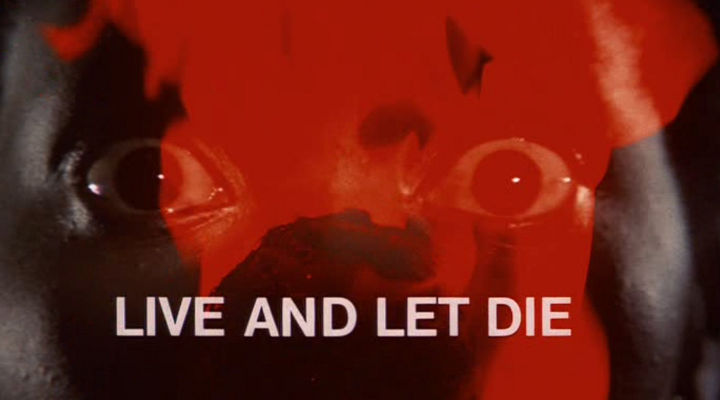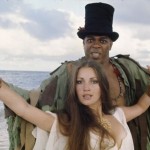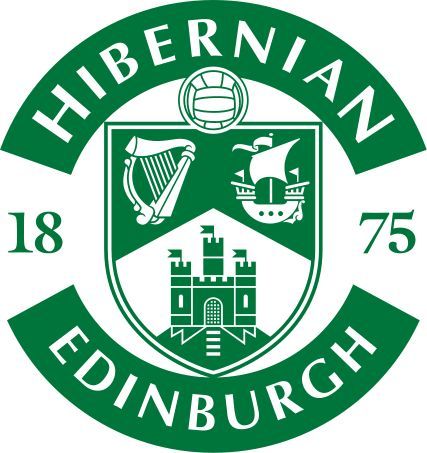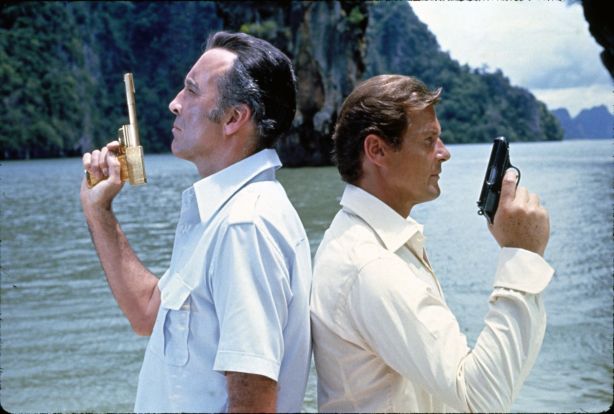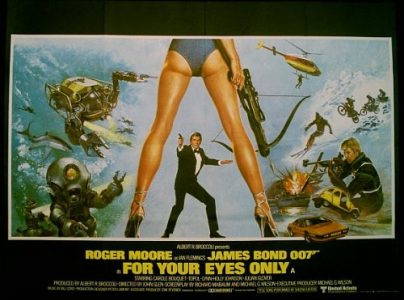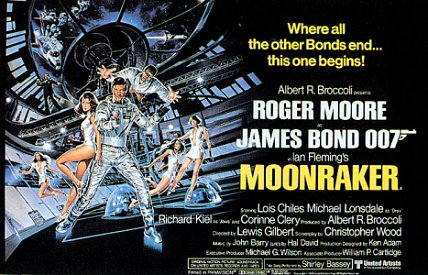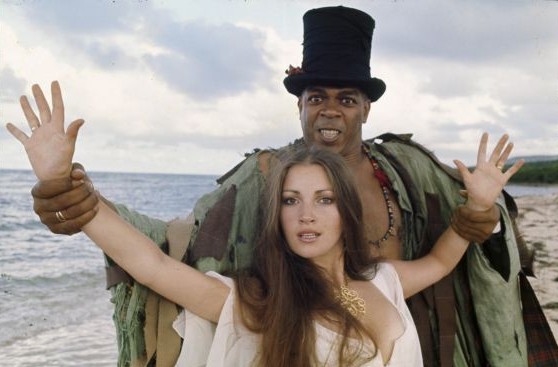Following up my review of Live and Let Die, I now turn to George Martin’s wonderful score which accompanies the 1973 Bond adventure of the same name. This is my favourite bond soundtrack from the entire series. It’s a refreshingly original addition to the many brilliant soundtracks composed by John Barry who was music composer for the earlier Connery films. What I liked most about George Martin’s masterpiece is how exciting the score is and expansive this remastered version is in comparison to the original LP and CD which I will review another time. This soundtrack is punchy, lively and really cool. Live and Let Die marked the beginning of a new era of Bond movies where George Martin had his work cut out following in the footsteps of the soundtracks created before. However, despite the high expectations, he did an excellent job of stamping down what this Bond is all about, tonnes of fun.
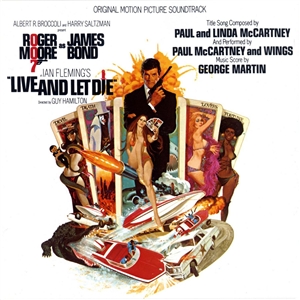
Copyright by Metro-Goldwyn-Mayer, United Artists and other respective production studios and distributors. Used for editorial purposes.
Opening the album is Live and Let Die’s main title theme which is a seriously rocking track. It’s as perfect a Bond theme could ever hope to be and is my favourite from the entire series. It begins with Paul McCartney singing the lyrics ‘When you were young and your heart was an open book…’ accompanied by a simple piano arrangement which changes chords before the impact of drums and guitars explodes while McCartney sings the lyrics; ‘Live and Let Die’. We hear background singers in addition to McCartney who sings ‘You know you did, you know you did, you know you did’ which adds another layer to the song. My favourite section follows in the form of an orchestration where the song picks up speed and we hear a motif which Martin carries through the entire movie. It’s a catchy section where we hear a glockenspiel style instrument being played while the guitar can be heard playing the Live and Let Die signature tune and flute played in sharp single notes. This continues until we then hear heavy strings while the theme begins to sound eerie while maintaining it’s pace and rocking beat. The pace suddenly drops off after the song reaches a peak and Paul McCartney’s lyrics kick in again, this time as a catchy little segment where Paul sings ‘When you’ve got a job to do, you’ve got to do it well’. At this point, there’s a unique sound heard here which I can only describe as a door creaking open which accompanies the jumping beat. McCartney sings the lyric; ‘Give the other man HELL’, emphasising the word ‘hell’ before the glockenspiel motif is heard again and the song continues to maintain being uptempo. For the second time, the song then slows down but slower than before and we hear a lovely string section where McCartney sings much slower than before along with the piano heard again. It’s a beautiful part of the song which adds a sense of mystery to the piece before McCartney bursts into tempo again with ‘Live and Let Die’ before the song reaches it’s climax, repeating the main theme with guitar and glockenspiel before climbing then ending on a long played out string note which fades out. The title theme is known for being one of the best, if not the best Bond theme song of all time.
In complete contrast, the following track on the soundtrack seems out of place but is a welcome addition to have on the album. It’s called ‘Just a Closer Walk with Thee/New Second Line’ and accompanies two scenes within the movie; the opening scene where a CIA agent is killed and secondly when Bond and Felix arrive in New Orleans later in the picture. It’s a recording of a New Orleans brass band which at first sounds like a very somber funeral march. The music is depressing but then suddenly a loud trumpet note is heard and the music completely changes tempo and mood. Now the band bursts into a lively carnival style sound which works like a charm as music to accompany the scene in the movie. On it’s own, it’s nothing particularly outstanding but it works so well within the movie and adds the New Orleans flavor to the listener’s soundtrack experience.
‘Bond Meets Solitaire’ picks up where I feel the soundtrack should really have began after the main title theme. Firstly, we hear Solitaire’s theme which features wind instruments before changing to the Live and Let Die bond theme motif which creates suspense and intrigue. We hear little snippets of a catchy guitar playing before a sudden drum beat signals what in the movie is Tee Hee’s metal arm. Heavy trumpets sound as Bond’s gun is destroyed which works well for conveying the power of the villain’s tool. The music then settles back into the feeling of suspense while we hear beautiful strings and during the scene where Bond picks out a Jester card, the score creates the sound of a jester with the use of percussion. The end of the track comes to a close with the return of the guitar theme and the track builds to a climax, ending with a beautiful string section before coming to a halt. Track number four is called ‘Whisper who dares’ which begins as a mid tempo string segment which accompanies Bond while he is travelling through New York by taxi. Whisper, one of Live and Let Die’s villains drives alongside Bond’s taxi, taking out one of his drivers. At this moment, the track changes tempo, beginning to increase speed and intensity while Bond attempts to steer the taxi alone without the driver. While the taxi swerves between cars on the motorway, the track begins to feature wah wah guitars and drumming mixed with short loud trumpets sounding before coming to an abrupt end as Bond crashes the taxi on a side street. It’s a standout track on the album which includes a feel of both suspense and action.
‘Snakes alive’ is a different track again, this time slow eerie strings are accompanied by a cymbal creating a darker feel than the previous tracks before. The strings are heard creating suspense which then lead us to hear the Bond theme again, while building suspense. The song eventually leads to a sudden change in feel while Bond discovers a snake approaching. Heavy trumpets and percussion pump in as Bond turns and kills the snake with his spray can, lighting the Aerospray can by using his cigar. Suspenseful strings and percussion are then heard before the main Bond theme is played to full brass signalling the snake’s death. The final section builds again and a fast change of strings accompanied with drums and the bond theme convey Rosie Carver’ attempted assassination of Bond. It’s a great piece to hear from the album and stands out by being one of the slower paced tracks from the album.
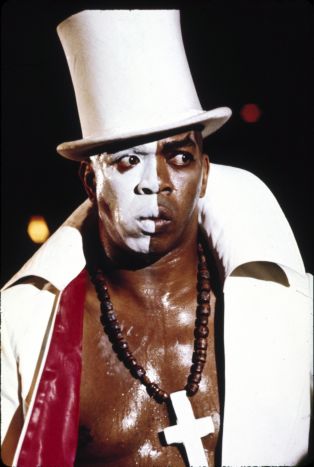
Copyright by Metro-Goldwyn-Mayer, United Artists and other respective production studios and distributors.
‘Baron Samedi’s Dance of Death’ is really fun. It’s a short catchy song which begins with a surprise flourish of trumpets mixed with the sound of Caribbean percussion and unforgettable rhythms. After the repetitive opening of the track getting you in the mood, light brass instruments are heard in a fast paced arrangement. There’s an unusual sound heard which almost sounds like Baron Samedi’s mouth when he presents haunting expressions to the audience in the film. There is also a little catchy instrument played like a guitar. You’ll have to forgive my total lack of music knowledge when I talk about instruments used. The brass kicks in again and there’s an unforgettable part where the trumpets play in an almost laugh like arrangement and the guitar sound is heard again. This track is really hard not to dance or tap to, it’s so catchy. In the film, it’s the tune that first introduces the audience to the chillingly cool yet menacing, Baron Samedi. Also note that the original soundtrack features a different recording and mix of this track which is worth a listen, it’s tighter and less repetitive at the beginning. Following the ‘Dance of Death’ is probably one of the most underused tracks in the movie. It features within the film during the scene where Bond is in his hotel apartment and checking the room for bugs. The music can only be heard in low volume as it was intended to be background music of the band that Bond had seen earlier in the evening. This track is a joy to listen to, it’s almost Latin sounding and features catchy light brass instruments with Caribbean style percussion drums. It’s moderately paced where the brass does most of the work here, it’s just a shame the movie didn’t make more use of it because it’s another fine tune.

Copyright by Metro-Goldwyn-Mayer, United Artists and other respective production studios and distributors.
The track ‘Fillet of Soul’ is one of the most unusual tracks on the soundtrack, featuring an alternate version sung of the Live and Let Die main theme sung by B.J. Arnau. Although McCartney’s version is a complete masterpiece, this version is equally as good. The beginning of the track sounds like R&B and very seventies sounding which works really well within the movie accompanying the scenes with Bond in bars in Harlem and New Orleans. The middle of the track features the singing of the main theme, Live and Let Die which rocks as much as the original. The track transitions into orchestration and we hear loud saxophones which sound great, conveying the setting of Harlem and New Orleans of that 70’s period. Something positive that can be said about the entire soundtrack is that every track without exception has something different to give.
‘Bond Drops in’ begins with a swirl of strings before picking up tempo while Bond para-glides to the ground. As he lands, we hear a harp play before the main bond theme is heard again. The rest of the majority of the track features music not heard within the movie. It’s an extended romantic sounding string segment which could have been used for a longer glide scene. The track’s climax features a catchy guitar and leads into the Solitaire theme again. Suspense builds with the use of percussion and snare drumming before a quick change in pace while strings suggest action before ending. It’s my favourite piece on the whole soundtrack and sounds gorgeous to my ears. The use of strings and other jungle sounding instruments adds the romantic quality to the track.
Track ten called ‘If he finds it, kill him’ is an slow to mid tempo number which you’ll be familiar with from watching the scene where Bond and Solitaire are following the scarecrows before discovering Kananga’s poppy fields. It’s a darker more haunting theme which reaches a peak while heavy brass instruments burst out before light strings are heard while Bond overlooks the fields. As Bond and Solitaire decend to ground level, the music builds suspense but subsides until a manic flourish of strings ends the track while our two characters are being chased by a Helicopter.
‘Trespassers will be eaten’ is a track that stands on it’s own without relying too much on the main themes used before. It is used within the Crocodile scene where Bond must escape from the island he has been marooned on. The music features catchy wah wah guitars, flutes and drumming initially before a massive sounding of trumpets signals Bond jumping atop the Crocs successfully navigating himself across them escaping from the island to safety. Unlike the first part of the song, the bond theme does kick in again as Bond pours gasoline around the farm factory. Strings and brass sound again as the fire is set alight and bursts of trumpets are heard while Bond makes his escape by speed boat.
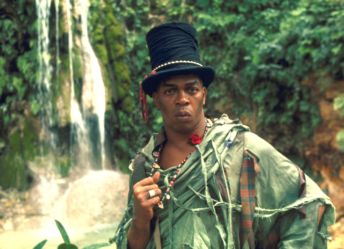
Copyright by Metro-Goldwyn-Mayer, United Artists, Danjaq, S.A. and other respective production studios. Used for editorial purposes.
We hear Baron Samedi’s flute theme played at the beginning of ‘Solitaire gets her card’ with triangle style percussion heard. It’s a creepy sounding intro which transitions yet again to the Solitaire theme. I would say at this point the Solitaire theme has almost been done to death but it’s just within acceptable amount of use. Anymore and yes, it would be too much. I feel George Martin got it just right. The track then continues building tension as Kananga is about to hit Solitaire while she attempts to pretend things are all well. Things are far from being good and the music concludes with long bursts of a low bass sounding trumpet which accompany the moment Solitaire is struck. The music feels almost like it’s stopped but a dramatic burst of brass and drums complete the track. It’s one of the more memorable tracks from the soundtrack, mixing haunting themes with real suspense.
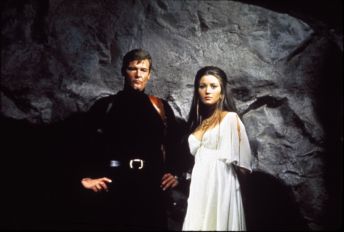
Copyright by Metro-Goldwyn-Mayer, United Artists, Danjaq, S.A. and other respective production studios. Used for editorial purposes.
‘Sacrifice’ is a catchy Caribbean style instrumental piece which features prominently in the climax of the movie where Solitaire is due to be sacrificed. The track has a jungle style sound where a constant beat is heard while kettle drums clank together. Then a creepy sounding wind instrument is heard creating a haunting atmosphere. The jungle drumming continues before we hear a manic sound of flutes which we hear in the movie when Solitaire is taken from the church and appears on screen. This track works effectively for accompanying the voodoo theme where heavy brass instruments signal the arrival of the Dambala which is a man dressed with a goats style head hat. Percussion instruments kick in as we see the shot of snakes. As the Dambala approaches Solitaire with the snake, a remarkably unique sound is heard. Strings play one long note while their pitch increases. This continues while the snake gets ever closer until the music comes to a sudden halt with a last blast of brass. This is one of the best tracks on the whole soundtrack in my opinion.
Moving onto the additional tracks which are exclusive to the expanded edition, you’re in for a treat. The original soundtrack only featured half of the music which features on this edition as back in those days, there was limited space available on LP and early CD formats. The original also featured different variations of some of the tracks featured on this album as they were also recorded at different times. The original masters were used for this release which is probably why it sounds absolutely fantastic.
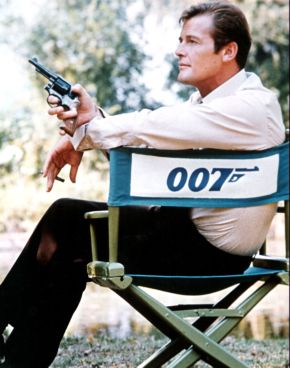
Copyright by Metro-Goldwyn-Mayer, United Artists, Danjaq, S.A. and other respective production studios. Used for editorial purposes.
First of the new bonus tracks is the 1973 James Bond theme. It’s a fantastic effort by George Martin and really brings 007 into a new decade. It’s got a better bass sound for the theme than we’ve heard before and features heavy strings along with a catchy guitar sound mixed with wind instruments. The iconic theme is played out throughout and the highlight comes near the end when a swirl of strings bring the track to a final blast of the bond theme. I also feel this track worked really well in the film for when Bond is trailing Kananga’s car in a yellow cab through New York while there are spies all around him. Possibly not best placed, the following track, ‘Gun barrel – Snakebite’ is as the name suggests the original gun barrel music which is one of the best. It’s slightly lighter in tone than the 1973 James Bond theme but similar in that the use of brass is heard prominently. The guitar playing is terrific here and the end of the gun barrel features an assortment of trumpets blasting out which sets up a very exciting bond opening. The remainder of the track seems a little too quiet featuring jungle music which is nice but way too quiet but all is forgiven at the end of the track when a sudden down tempo of strings signals the death of Bains when he gets bitten by a snake. This piece of music of course leads to the main title theme and I think this small piece of instrumental music at the end was so important to the success of the main theme in context with the movie.

Copyright by Metro-Goldwyn-Mayer, United Artists, Danjaq, S.A. and other respective production studios. Used for editorial purposes.
Next is ‘Bond to New York’, an excellent track which begins with romantic flutes and orchestra creating a relaxing atmosphere before the music changes to an uptempo version of the main theme used within the movie. The use of percussion drums here is really catchy and it’s a nice short cue. At 01.16 the cue for Bond’s arrival at the Cult Voodoo shop store is heard. It features heavy wind instruments mixed with drumming, light guitar and sounds very catchy. The track climbs in suspense towards the end before a blast of trumpets signals Bond being discovered by a CIA agent in Harlem. I liked this track because it wasn’t too long and it helps increase the pace of the album. Track seventeen is oddly placed again and is a alternate take of the San Monique track which was not used in the film. I much prefer the other version which is used in the film but that’s not to say this track isn’t any good. It’s features an organ while using flutes and a gentle drumming rhythm which is nice to listen to. I can hear a glockenspiel being played too. It’s one of the most gentle tracks on the album and it makes me feel at ease. The flutes steal the show on the track, making it a unique track on the soundtrack.
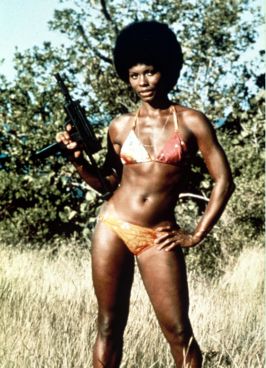
Copyright by Metro-Goldwyn-Mayer, United Artists, Danjaq, S.A. and other respective production studios. Used for editorial purposes.
‘Bond and Rosie’ is a rather excellent track indeed. It begins with sweeping strings and a harp which sounds beautiful. Suddenly a blast of brass signals the discovery of a voodoo hat which will catch the listener off guard. The track then features a really catchy segment which sounds very Caribbean and exotic. It works really well in painting an image in the mind of a listener that we’re somewhere warm. A rather unusual change of piano chords signals Bond observing the House of the Kananga woman. The music is now slowly paced and we get to listen to a nice arrangement of strings before a long string note is played creating suspense. The final cue on the track is of Rosie Carver’s real identity being discovered by Bond. The music returns to the romantic theme we heard from the opening of the track but then changes to the James Bond theme. While Rosie looks up, noticing a scarecrow watching, heavy brass is heard and the classic glockenspiel theme is heard again as Rosie flees in fear. It’s one of the best tracks along with many others plus we get to hear more of that amazing wah wah guitar.
‘The Lovers’ is a lovely theme, beginning with a piano playing with romantic horns and smooth playing strings. The Solitaire theme is heard with horns before we hear a harp in the background. It’s a beautiful segment to listen to. The remainder of the track includes the bond theme with percussion drums which works well conveying Bond and Solitaire’s trek towards the cemetery. An added bonus here is the addition of Baron Samedi’s solo flute theme. It’s very creepy and sends chills down your spine.
‘New Orleans’ bursts into life in contrast to the previous track, beginning with heavy brass followed by a series of fanfares then one note of a cow bell type instrument before an epic instrumental rendition of Live and Let Die is heard which accompanies Bond escape on the San Monique bus. The next cue features flutes and percussion drums as Bond finds himself captured yet again. The third cue is a fast paced mix of quick brass and percussion suitable for the comedy scene where Bond gives Mrs Bleaker a flying lesson. The last cue is a slow rendition of the Solitaire theme as she is discovered as having lost her power while Bond is interrogated. There’s a nice bass sound here to appreciate.
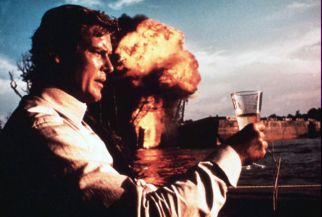
Copyright by Metro-Goldwyn-Mayer, United Artists, Danjaq, S.A. and other respective production studios. Used for editorial purposes.
Second last track is called ‘Boat chase’, an exciting piece of music which features in the movie. It consists of the Caribbean sounding drumming again and main theme. As the track comes to a halt, we hear a nice little drum arrangement with short brass notes played before the main theme kicks in again, building excitement while brass instruments sound out before a long descending note signals the explosion of a Tanker ship. There’s an added ten seconds at the end which seems unnecessary but does slow the track down more gradually than ending where it could have after descending. I like playing this track and it’s one of the more played ones from the album I choose to listen to over and over again. The final track, ‘Underground lair’ begins with a chilling long note played out while accompanied by triangle style percussion and cymbals as Baron Samedi raises from the ground. A sudden burst of almost off key sounding brass signals the next cue which features in the climax of the film where Bond must escape Kananga’s shark tank. It’s a repeat of the main themes used throughout the movie but somehow it sounds so fresh and exciting in this final track. The wah wah guitar is great here in addition to the return of the heavy strings from the main title theme. As the track picks up pace, there’s a superb use of base while the glockenspiel theme is repeated. We hear more of the same at this point but the track then features a sudden harp transition before the music leads to a massive big brass ending as Kananga’s explodes as an inflated balloon. A final little extra is the main theme played out again before fading to silence.
Another highlight of this soundtrack is that while your listening to the score, you can easily visualise the scenes from the movie more vividly more than while listening to many of the other Bond soundtracks. I would highly recommend this soundtrack to anybody who enjoys the Bond series but also to any general listener too. It’s just such a great soundtrack, it should be listened to by everyone at least once in my opinion. Terrific masterpiece by George Martin. You can check my review of the Live and Let Die movie and DVD here on my magazine website as well.

